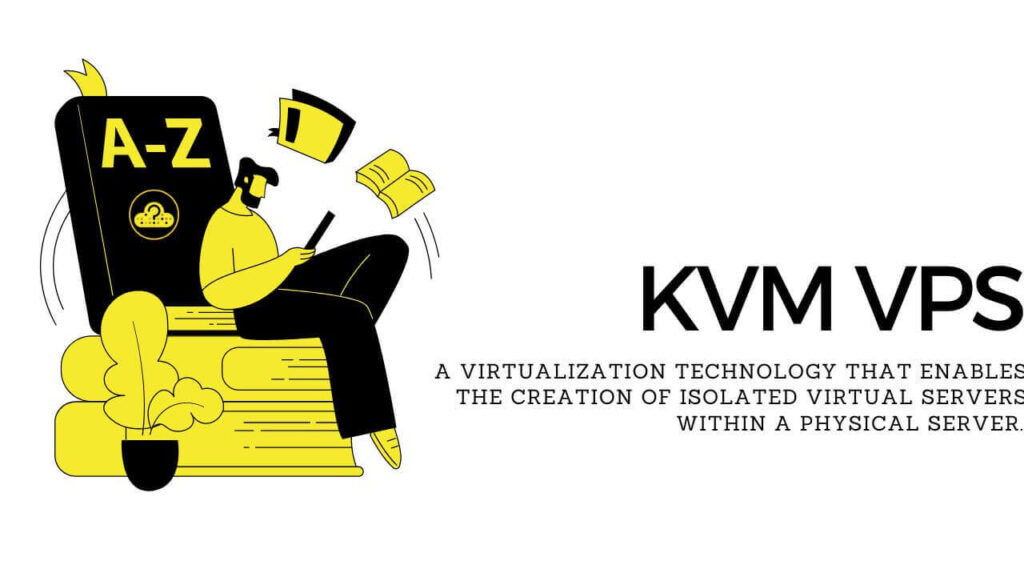What Is KVM VPS?
- Short Definition:
- KVM VPS, or Kernel-based Virtual Machine Virtual Private Server, is a virtualization technology that enables the creation of isolated virtual servers within a physical server. The technology utilizes the Linux-based Kernel-based Virtual Machine hypervisor to offer dedicated resources, independent operating systems, and improved performance for hosting websites, applications, and services.
- Extended Definition:
-
KVM VPS, which stands for Kernel-based Virtual Machine Virtual Private Server, is a sophisticated virtualization solution designed to partition a physical server into multiple isolated virtual servers, each functioning as an independent entity. The underlying technology, known as the Kernel-based Virtual Machine (KVM) hypervisor, enables the efficient emulation of hardware components and allows each virtual server to run its own operating system with dedicated resources such as CPU, RAM, and disk space.
KVM VPS goes beyond traditional virtualization by providing a higher degree of isolation and security, making it suitable for businesses and individuals seeking enhanced control and performance for hosting websites, applications, and services. This virtualization technology offers flexibility in managing multiple virtual servers on a single physical machine, allowing users to tailor their configurations to specific needs while enjoying improved stability and resource allocation.
How Does KVM VPS Work?
KVM VPS operates by leveraging a powerful virtualization technology known as the Kernel-based Virtual Machine hypervisor. This technology enables the creation and management of multiple isolated virtual servers, each running its own operating system and applications, within a single physical server.
Here’s how KVM VPS works:
- Hypervisor Layer. At the core of KVM VPS is the hypervisor layer. The hypervisor is a software-based virtualization platform that sits between the physical hardware of the server and the virtual servers it hosts. KVM is a type 1 hypervisor, which means it operates directly on the server’s hardware without the need for an underlying operating system.
- Virtualization. The KVM hypervisor uses hardware-assisted virtualization capabilities provided by modern processors to create virtual machines (VMs). Each VM is an isolated environment that emulates a complete set of hardware components, including CPUs, memory, storage, and network interfaces.
- Resource Allocation. KVM VPS allocates dedicated resources to each virtual server. This ensures that the resources assigned to one virtual server are not shared with others, providing a higher degree of performance predictability and isolation. Users can configure the amount of CPU cores, RAM, and storage for their virtual servers based on their requirements.
- Operating System Independence. KVM VPS supports a wide range of operating systems, allowing each virtual server to run its own OS. This means that different virtual servers on the same physical machine can operate with distinct operating systems, such as various Linux distributions or even Windows.
- Virtual Networking. KVM VPS includes virtual networking components that allow each virtual server to communicate with the outside world and other VMs securely. This is achieved through virtual network interfaces, bridges, and virtual switches.
- Management Tools. KVM VPS management tools provide users with the ability to create, configure, and control their virtual servers. These tools often offer features like remote console access, snapshot capabilities, resource monitoring, and automated backups.
- Isolation and Security. One of the key strengths of KVM VPS is its robust isolation. Since each VM operates independently, issues in one virtual server do not impact others. This isolation enhances security, making it difficult for security breaches or malware to spread between virtual servers.
- Scalability. KVM VPS allows users to easily scale their resources up or down as their needs change. This means that businesses can adjust their server configurations as they grow, without the need for physical hardware changes.
In short, this server technology provides a powerful and flexible virtualization solution that enables the efficient utilization of hardware resources, improved security, and the ability to host multiple isolated virtual servers on a single physical server. It is an ideal choice for businesses and individuals seeking dedicated performance and control without the complexities of managing physical hardware.

For more definitions, check out our dedicated Definitions List.







